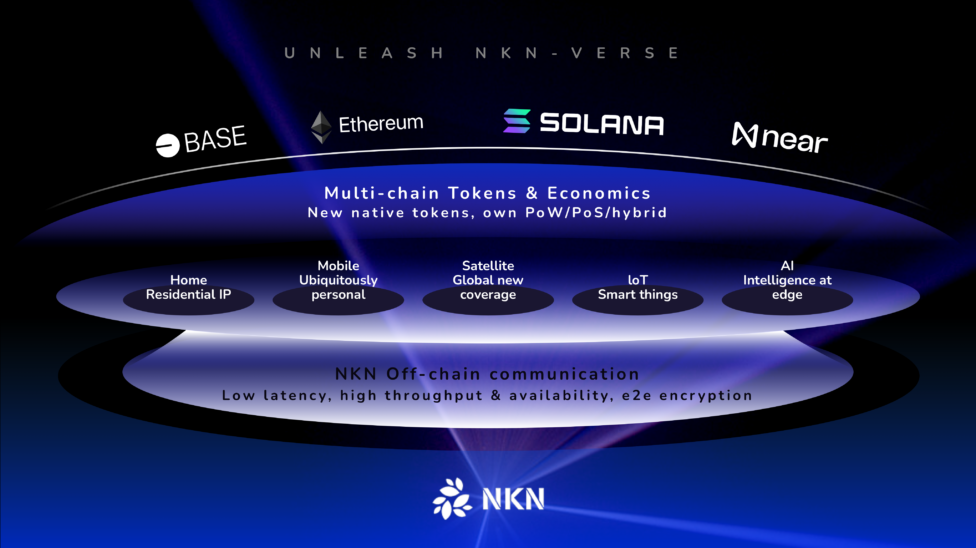The current NKN network works well as a general purpose decentralized data transmission network. Since its launch in 2019, NKN network has grown to up to 100k full nodes globally, relaying over 20 billions messages per day. Powered by our novel MOCA consensus algorithm, every full node participates in consensus to vote for blocks using neglectable resources, making the NKN network the largest blockchain network measured by the number of consensus nodes. Block producer in NKN network is selected by Proof of Relay, where the chance of a node getting mining reward is roughly proportional to the number of data relayed.
Proof of Relay requires a node to have a public IP address to accept incoming connections. It also encourages nodes to have low latency and high uptime by taking those factors into consideration when selecting relay routes. Nodes running on cloud and dedicated data centers usually have advantage and yield more mining reward as their networks are performant and stable. As a natural result, most nodes in the NKN network are running on cloud or data centers. This is the ideal result if we care about network performance, as the resulting network is optimal for latency, throughput and reliability.
But that is just part of the story. As a network infrastructure layer, NKN network also wants to have better coverage and diversity in its node providers because each type of network resources provides its unique value. For example,
- Home and mobile networks are ideal for data collecting that is indistinguishable from real users (i.e. who);
- Satellite networks are good for expanding the boundaries of where the Internet can be accessed on the planet (i.e. where);
- IoT networks define what devices/machines humans can talk to and control (i.e. what). Those different networks are, and should be, heterogeneous.
A single mining mechanism such as Proof is Relay is not enough to cover all of them. To attract devices in different networks to join, there should be multiple rewarding mechanisms, each rewarding its own network and behaviors based on the network characteristics and be incentive compatible with nodes in that network.
We propose a multi-network approach to tackle this problem. Each network has its own on-chain mining mechanism and tokenomics, with off-chain data transmission through the NKN network.
- The on-chain mining mechanism and tokenomics can be tailored to best fit the network nature, either using its own blockchain or based on smart contracts on an existing blockchain such as Ethereum, Solana, BASE, etc. There could be useful Proof of Work, Proof of Stake, or a hybrid of both.
- For the off-chain communication, since most of the non-cloud devices will not be publicly accessible due to lack of IP address or firewall restrictions, the NKN network is a natural fit to provide decentralized communication capabilities between those devices.
For example, using the NKN network as the network layer, users can send requests to home network devices to collect data; satellite devices could form a peer to peer network for verification or consensus; network participants can stream real time data from IoT devices. In return for using the NKN network for data transmission, a portion of the newly mined token should be rewarded to NKN token holders based on their holding/staking value.
Therefore this is the most transformational expansion of the NKN-originated ecosystem that will propel the next level of growth for all things communication, be it home, mobile, satellite, IoT or AI. Are you ready to get on board?

